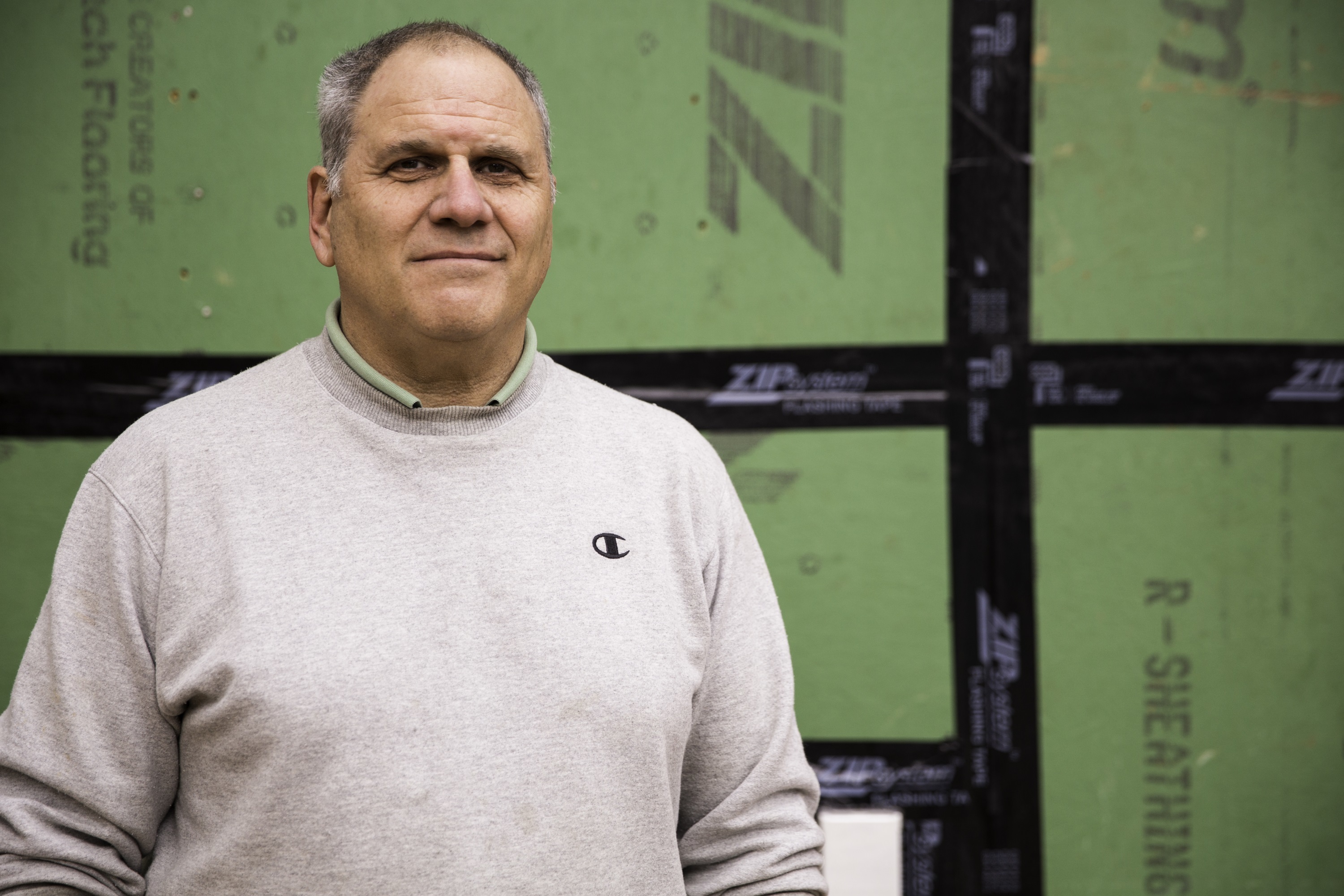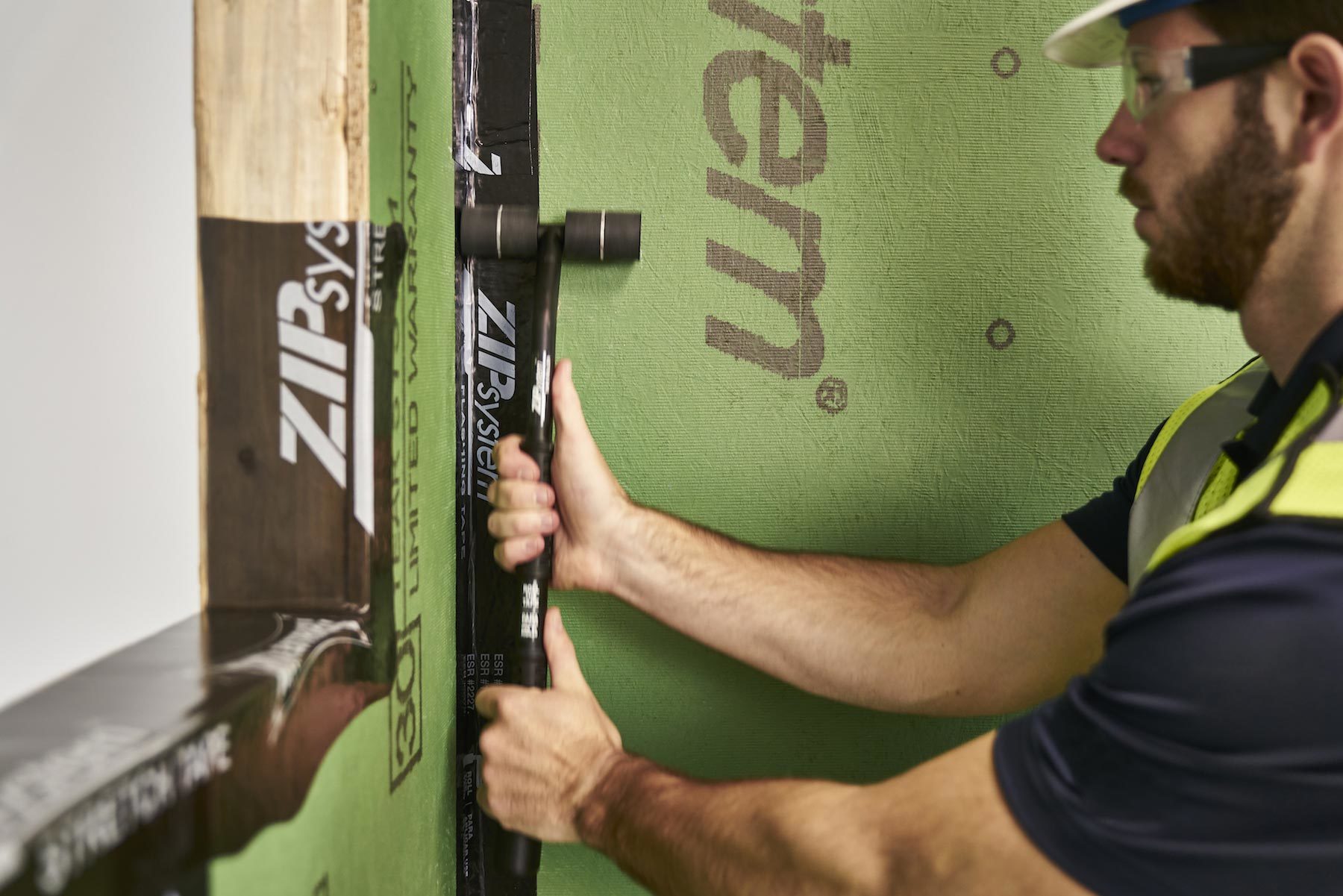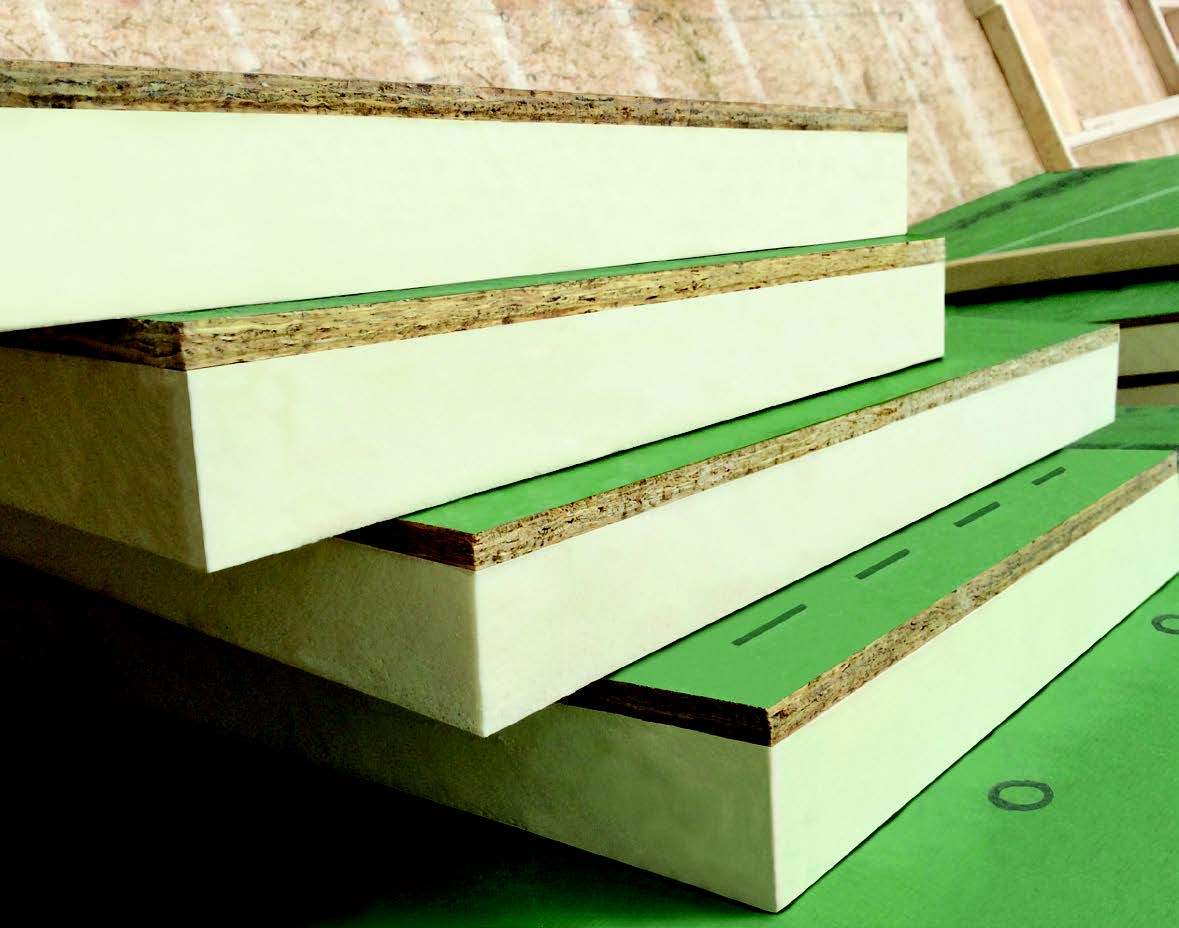
Q&A on Continuous Insulation with Green Builder Carl Seville
7 Min Read February 17, 2017
Q: Let’s start with SK Collaborative. Tell us about your firm.
A: We are a green building consulting and certification company. We certify single and multifamily projects under all green building programs including LEED for Homes and Neighborhood Development, EarthCraft House, National Green Building Standard, ENERGY STAR, and Enterprise Green Communities. We also provide professional training, and curriculum and technical writing for the construction industry. We provide certification services throughout the eastern US in both the affordable and market rate sectors.
The one step method using ZIP System R-sheathing is significantly simpler and less costly than installing multiple layers of OSB and foam to achieve the same results.
Q: You’re a leading authority on single- and multi-family green building. How do you work with homeowners, architects and manufacturers to create better buildings and products?
A: Working with our clients from as early in the design process as possible, we recommend products and systems that will help our clients’ building perform better while maintaining budget pressures. We provide energy modeling services to assist in determining the most appropriate products for each project, weighing building envelope and system efficiencies for highest performance.
Q: Talk to us about the building science of managing condensation within walls, and why this is important for professionals or homeowners seeking to build an energy efficient home?
A: The key to managing condensation is a combination of air sealing and vapor retarders where appropriate. Air leakage is the main cause of interstitial condensation – either from the exterior or the interior, depending on the climate. In most US climates, vapor retarders are not recommended in walls since walls tend to dry to both the interior and exterior, depending on the season. In extreme cold climates with limited or no air conditioning, vapor retarders can help avoid condensation in walls. In moderate climates, air sealing, particularly from the exterior using products such as ZIP System® sheathing and tape, helps keep airborne vapor out of structures.

Q: How do prescriptive code changes in the 2015 IECC guidelines address the issue of thermal bridging which impacts energy efficiency?
A: The 2015 IECC requires continuous insulation for thermal and moisture management in exterior wall cavities using the prescriptive path in climate Zones 6 and above. In Zones 3, 4 and 5, using continuous insulation with R-13 cavity insulation allows for a thinner wall than meeting the requirement of R-20 in a cavity. Using foam insulation helps keep the interior surface of the sheathing warm in cold weather, reducing the possibility of condensation on this surface, between the insulation and the sheathing. Cold sheathing without continuous insulation has a high risk of interstitial condensation of any vapor moving from the interior of a home through the exterior walls. In a typical wood framed wall without exterior continuous insulation, thermal bridging occurs at each stud, plate, and header, reducing the effective overall R value of the wall well below the rated value of the cavity insulation. By adding a layer of continuous insulation, the thermal bridging is eliminated improving the overall efficiency of the wall higher than the rated value of the cavity insulation.
Q: How long have you used products from Huber Engineered Woods? How about ZIP System R-sheathing and tape, specifically?
A: I have seen and worked with AdvanTech® sheathing for many years. My first experience with ZIP System sheathing and tape was during the renovation of my current house in 2013. I used it on the exterior walls and roof and was very pleased with the weather and air barrier properties. The house I am currently building will use ZIP System® R-sheathing with built-in R-3 insulation on the exterior walls, and ZIP System® sheathing on the roof and on the top of the second floor ceiling joists; this is a passive house style technique that will allow me to create a complete air seal on the exterior surface of the walls and ceiling, avoiding problems with ceiling penetrations, such as lights.
Q: What building methods did you use before you made the switch?
A: The last house I built used OSB on corners where needed for structure and ½” XPS on all other exterior walls. Prior to this new home, I typically used or suggested my clients use spray foam on rooflines to create a well sealed building envelope. This project will be using ductless HVAC systems, eliminating the need for a conditioned attic. In this project, I will be using fiberglass insulation, limiting the use of spray foam to miscellaneous sealants.
Q: How has using ZIP System® R-sheathing and tape changed your approach to designing and building the outer shell, or building envelope, of homes?
A: ZIP System R-sheathing allows builders to create a tight building envelope prior to installation of drywall. With the appropriate design, it is possible to test for envelope leakage before any insulation or drywall is installed, identifying leaks before it is too late to seal them properly.
Q: Why is a product like R-sheathing – that provides structure, thermal resistance, air leakage protection and moisture resistance – a “game changer” for green home construction?
A: In any situation where continuous insulation is necessary or desired, the one step method using ZIP System R-sheathing is significantly simpler and less costly than installing multiple layers of OSB and foam to achieve the same results. In addition, eliminating the separate weather barrier further reduces installation cost.

Q: Why did you choose this product for this particular house? (Or, what type of impact do you expect R-sheathing to have on the performance of this home?)
A: LEED and ENERGY STAR certification require either advanced framing or continuous insulation. I will be incorporating both, however even the most advanced framing cannot eliminate all thermal bridging, so the use of continuous insulation will make a well-insulated a building envelope as is practical in my relatively mild Zone 3 climate. Traditionally, continuous insulation is installed on top of a home’s structural sheathing in separate steps, requiring multiple trips for the crew around the building. One step to install the sheathing, another to install the rigid insulation, and another to install the weather barrier. Using ZIP System R-sheathing allows a crew to install the insulation, structural sheathing and weather barrier in a single step.
Q: What are the benefits of using R-sheathing in a southern market compared to its insulation benefits in northern climates?
A: In cold climates, installing continuous insulation such as R-sheathing can significantly reduce thermal bridging at framing members, significantly improving the overall thermal performance of exterior walls, particularly during periods of severe cold. The benefits of R-sheathing are not as significant in warmer climates, nor during moderate weather in cold climates, since the delta T (temperature differential) between the interior and exterior are relatively small. There are moderate benefits year round, and the combination of continuous insulation and comprehensive air sealing will help maintain indoor temperature during severe cold weather. R-sheathing provides a level of passive survivability should a home lose electricity during a severe cold snap.
Q: Why did you decide to certify the house as LEED Version 4?
A: The city I live in, Decatur GA, included a requirement for green certification for all new buildings and major renovations in a comprehensive development ordinance adopted recently. Options for homes include LEED, EarthCraft, and NGBS. Having done numerous projects in the second two programs, and several LEED V2009 projects, I decided it would be educational to certify under LEED V4, before we are asked to provide this service for our clients. Having been one of the main contributors to the LEED reference guide, it is interesting to now be using it to certify my own house. There are some significant improvements in the new program – obviously the USGBC learned from their experience with the earlier version. I will likely also certify under EarthCraft and NGBS as well.
For more information on ZIP System R-sheathing, visit ZIPSystem.com/R-sheathing. Learn more about SK Collaborative at SKCollaborative.com.

